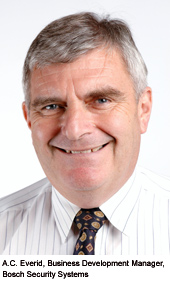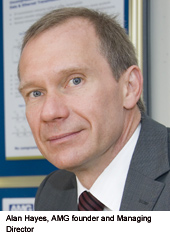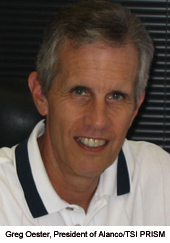Correctional facilities hold individuals convicted of breaking the law, ensuring they remain behind bars until they complete their sentences. Securit solutions help prisons fulfill their purpose, keeping inmates and staff safe at the same time.
Correctional facilities hold individuals convicted of breaking the law, ensuring they remain behind bars until they complete their sentences. Security solutions help prisons fulfill their purpose, keeping inmates and staff safe at the same time.
High walls, armed guards and little privacy make prisons forbidding places. As individuals are sentenced to spend time behind bars — up to a lifetime — few inmates choose to be there. Prisons house inmates punished for everything from petty crime to murder, making social interactions volatile and requiring attention from guards. Security improvements are helping guards watch prisoners more effectively, along with keeping prisoners safe. With maximum security institutions deploying the most comprehensive solutions, prisons are key users of security.
Market for Corrections
As prison populations grow worldwide, there is strong demand for prisons. The United States has the largest prison population in the world, with 2.3 million prisoners in 2007, according to the U.S. Bureau of Justice Statistics. China is second, with 1.5 million prisoners in 2005, according to its Ministry of Justice. As more prisoners result in higher occupancy, prisons are expected to expand or rebuild.
Some prisons are privately managed instead of government-run. The prison management market was worth US$2.86 billion in 2007 and is expected to reach $3.4 billion in 2012, said the Freedonia Group in its “World Security Services” report. America accounted for 87 percent of private prison revenues globally, at $2.5 billion.
Prison privatization will slow down, due to opposition, but prisons overall are expected to grow. “Prison management contracts with private firms have been revoked in countries from Canada to New Zealand, with the state resuming
control,” said the Freedonia report. “Moreover, these countries and many others all face rising prison populations, already overcrowded correctional systems and budgetary pressures, suggesting that substantial investment in new facilities — at least some of which are expected to be privately run — will be needed.”
Security equipment is needed at new correctional facilities, particularly surveillance products.“Video surveillance in this vertical is currently dominated by analog camera deployments; however, IP video is a proven technology that has many advantages over traditional analog CCTV systems,” said Jafizwaty Ishahak, Research Manager, Asia Pacific, for Frost & Sullivan. “In Asia Pacific, IP video surveillance is touted to replace most analog cameras by 2014 in various verticals/applications.”
Threats
Breakouts
As prisons are not destinations of choice, escapes are a unique threat to the corrections market. While attempts are made, ranging from helicopter rescues to smuggling inmates by vehicles, escapes are infrequent.
"When one thinks of prisons, the first thing that comes to mind is escape,” said A.C. Everid, Business Development Manager, Bosch Security Systems. “But in fact, while escapes do happen and prevention of escape is fundamental to prisons, escape and escape attempts tend to be rather rare.”
 Breakouts are factored into prison design, as potential escape routes are analyzed, said Richard Sebastian, Research Analyst at Frost & Sullivan.
Breakouts are factored into prison design, as potential escape routes are analyzed, said Richard Sebastian, Research Analyst at Frost & Sullivan.
Escape awareness needs to continue after a prison's completion. “Constant vigilance is key as mistakes can lead to detainees escaping which can be life-threatening,” said James Somerville - Smith, EMEA Market Development Leader at Honeywell Systems Group.
Violence and Smuggling
As prisons include dangerous individuals, some prisoner interactions turn violent. Aggression needs to be kept in check, considering the volatile emotions of inmates or possible abuses by guards. This could escalate into a riot, possibly hurting prisoners, guards or the prison itself, Everid said. Vulnerable inmates could be abused or exploited as well. “This can take many forms, from virtual slavery, sexual abuse and drug trade, down to simple protection rackets and theft.”
Equipment can get damaged during violence, making vandalproofing necessary. “Within this area, all of our exposed equipment can be specified to be high-security grade, which means not easy to break or damage,” said Don Tennyson, Pelco A&E Business Development Manager.
 Smuggling can lead to violence, if prisoners got their hands on guns, knives or explosives. Other contraband could be fought over, such as mobile phones, drugs, alcohol or cigarettes.
Smuggling can lead to violence, if prisoners got their hands on guns, knives or explosives. Other contraband could be fought over, such as mobile phones, drugs, alcohol or cigarettes.
Suicide
With restricted liberties in prisons, some prisoners choose to end their lives. As prisoners are intended to reform and complete their sentences safely, prisons are responsible when inmates commit suicide.
"Suicide is all too common in prisons and detention centers — even for remand centers where the accused are held pending trial,” Everid said. “Prison authorities
have a duty of care for the inmates and are particularly worried about the adverse publicity — and in some countries the expensive legal cases — that can arise from a suicide.”
Concerns
The corrections market faces unique threats, with individuals trying to break out instead of break in. “A prison is in fact a small town — except that people's movements within the environment a re restricted or strongly regulated,” said John Waite , Business Development Manager of ISM.
Inmate diversity must be considered, as some present more of a risk than others. "Some might have been sent to the facility for committing burglaries while others may be in the institute for murder, rape and so on,” said Navin Rajendra, Frost & Sullivan Senior Research Analyst. “Based on this diversity, there are always problems in segregating the inmates from creating any disturbances within the facility.”
With different privileges for individual convicts, managing access control is a concern for prisons. “Each individual has to be identified during the counting process,” Rajendra said.
 A prison's limited access makes it difficult for security technicians to get in for repairs. “People who install or visit the site must be cleared before entry and are subject to standard search procedures, therefore, you have to ensure that you have low maintenance, high MTBF and that the entire solution is easy and quick to maintain,” said Alan Hayes, AMG founder and Managing Director. As prisons have recreational activities for prisoners , the smuggling of prison property is an issue. "A thorough check is always performed before prisoners are allowed to leave the workshop premises to make sure no tool or work refuse is taken back,” Rajendra said. “The same measures have to be taken in the prison mess as well, where prisoners use forks and knives for their meals.”
A prison's limited access makes it difficult for security technicians to get in for repairs. “People who install or visit the site must be cleared before entry and are subject to standard search procedures, therefore, you have to ensure that you have low maintenance, high MTBF and that the entire solution is easy and quick to maintain,” said Alan Hayes, AMG founder and Managing Director. As prisons have recreational activities for prisoners , the smuggling of prison property is an issue. "A thorough check is always performed before prisoners are allowed to leave the workshop premises to make sure no tool or work refuse is taken back,” Rajendra said. “The same measures have to be taken in the prison mess as well, where prisoners use forks and knives for their meals.”
Facility Differences
Corrections include everything from police stations to penitentiaries. Low security police stations hold individuals before trial or transfer them to another location on a short-term basis. High security prisons house convicted felons for longer stays, with more facilities to accommodate their needs. Prison security levels depend on the inmate population. “Maximum security prisons have a higher level of security, since the threats from the inmates can be higher,” Everid said. “This leads to smaller groups and even permanent solitary confinement, longer hours locked in cells, less association and so on than for lower risk categories.”
Less dangerous prisoners are placed lower security locations. “Open prisons and detention centers have much larger groups, and in fact largely rely on self discipline and peer pressure to maintain order,” Everid said.
By the numbers, lower security facilities outnumber maximum security prisons. “A key difference is that of scale,” said Somerville- Smith. “Detention centers tend to be smaller and more diverse in location, whereas maximum security prisons are concentrated in one area, but with higher levels of security and reliability required.”
Similar security technologies may be used in high and low security facilities, but are deployed for different needs. “Efficient security management in detention centers requires the standardization of systems across all locations in a region, in order to streamline procedures and facilitate remote monitoring as a backup,” Somerville-Smith said. “The size of some prisons means that the use of fiber optic cabling is required, due to the long cable runs involved.”
 Prison Technology
Prison Technology
Security at modern prisons has come a long way from moats and padlocks, but still require guards to watch inmates. Surveillance, access control and alarms are all used, resulting in convergence at newer institutions.
Integration
Integrating signals from diverse security systems makes convergence a top trend in corrections. Command and control solutions provide situational awareness, by bringing useful information to the operator's attention.
GSL UK, a G4S subsidiary, operates British prisons up to Category B, with the highest security Category A institutions run by the government. Stephen Moore,
Director of Business Development, Care & Justice Services, GSL UK, said, “We do try and integrate our various technical solutions and have, for example, looked  at joining up access control, key and radio dispensing systems with staff attendance monitoring and rostering systems, using biometrics to aid security.”
at joining up access control, key and radio dispensing systems with staff attendance monitoring and rostering systems, using biometrics to aid security.”
ISM' s c ent r a l management solution Genesys is designed for ease of use, with control room operators being trained in just 30 minutes. “Operators can either use touch screen operation or, if preferred, joystick operation — for example, to move PTZ camera positions,” Waite said. “For roaming guards, information can be accessed from a standard workstation, again using the same easy to understand graphic user interface.”
Video
Video takes up a large portion of the management solution. As it serves to watch inmates and staff, video products need to withstand abuse, stream to the central control room and integrate with analytics. For cameras, they must conform to prison standards. “If a camera is located in a prison cell, it must be vandal-proof and there shouldn't be anything tied to it, like cables for example, which might enable detainees to harm themselves,” said Daniel Wan, UK Marketing Manager at Honeywell Systems Group.
Housings must take similar precautions. “Our housings are designed such that they can be safely mounted within cells, without providing access to inmates to wrap a sheet around the housing and commit suicide,” Tennyson said. Video transmission has moved from analog to digital, enabling more timely responses to events. “Network surveillance is a trend, but most often existing cameras get upgraded to make them vandalresistant,” said James McManus, Market Research Analyst, Fire & Security Division for IMS Research. Fiber optic transmission makes network surveillance feasible, as video is uncompressed for future proofing and legal recording requirements. “The video images must be very high quality, in order to be feasible for evidence in court, for cases of riots or drug dealing,” Hayes said.
Fiber also supports the transmission of non-video signals. “Typically, these are  signals from the perimeter surveillance solution, access control, door control and so on,” Hayes said.
signals from the perimeter surveillance solution, access control, door control and so on,” Hayes said.
Real-time footage from network video enables video analytics, such as perimeter security or video-based smoke detection, McManus said.
Analytics are helpful when operator attention wanes. “There are a number of benefits, once of which is monitoring blind spots, as in some cases there are not enough guards to cover everything,” Somerville-Smith said. “A key benefit of analytics is perimeter detection for monitoring long or wide areas of prison perimeters, to address situations where detainees are involved in gang type behavior or loitering.”
ISM expected prisons to embrace behavioral analysis in the future, such as prisoner associations. “If someone on E Wing socialized with someone from D Wing who previously didn't know one another, it's something staff is alerted to,” Waite said. “There is an expectation that such behavioral video analysis will help to spot drug dealing, threats and body language which would lead to man-to-man violence much faster.”
Access Control
Prisons must ensure the right people can access restricted areas, while keeping the wrong ones out. Video verification and visitor management a re among the technologies deployed.
Real-time video has enabled remote access in some institutions. “In high security prisons, prisoners may be moved from one area to another without being accompanied, by being observed continuously and with doors being opened  remotely by the officers in charge of the move,” Everid said.
remotely by the officers in charge of the move,” Everid said.
Registering visitors is part of a prison's access control. “We can give regular visitors specific rights, such as medical teams, which means they will not be obliged to complete a full sign-in every time,” Somerville- Smith said. “It's about speed, reliability and security at the same time."
Biometrics
Biometrics in corrections is less for access control and more for identification,
as prisoners have restricted movement. Deployments include iris recognition for drug dispensing, ensuring the right inmates receive their medication.
In the future, the role of biometrics could change. “With the aid of biometrics, a proper count can be kept of prisoners without worrying about double counting
or wrongful identity,” Rajendra said. “In areas where only a certain cadre of prisoners is allowed entry, biometrics will be able to segregate the group of prisoners.”
Communications
Communications in prisons are vital, with public address and intercom systems broadcasting information to all.
The ISM Seltech solution allows prisoners to speak to staff directly from their cells' intercoms, transfers phone calls to specific cells and can be programmed for individual inmates. “If the staff has a vulnerable prisoner, they need to go see him every 15 minutes, then go back to their other duties,” Waite said. “These solutions help them work more efficiently and effectively, as they are alerted every time they need to check the inmate.”
The Seltech solution can enable audio and video recording when a guard's RFID tag is read at a cell, making auditing simpler. “If they face a disciplinary when a prisoner claims to have been abused, they don't have to have waste a lot of time,” Waite said. “If someone harms themselves or commits suicide, it aids the inquest afterwards — documenting that the prison administered duty of care and took necessary steps to review them every 15 minutes.”
RFID
Some high security institutions keep tabs on their inmates and staff by tracking them with active RFID (radio frequency identification) tags. This saves time when searching for individuals at large installations.
The TSI PRISM solution uses tamperproof wristbands for inmates and pager-like belt tags with duress alarms for staff. “If an inmate attempts to damage or remove the device in any manner, an alarm is created on the computer screen identifying the inmate, his location and what he has attempted to do,” said Greg Oester, President of Alanco/TSI PRISM. “Everyone in the prison complex wears some type of tag and can therefore be tracked.”
The system can incorporate inmate schedules, sending alarms if someone does not attend an activity. “For example, if an inmate does not appear for a work assignment, the system will locate him with a two-second keystroke, as opposed to a staff member consuming 30 minutes searching for the inmate,” Oester said. "It records meal and medication distributions, goes into alarm if inmates enter restricted areas, and can be utilized to electronically separate inmates that are prone to fight with each other.” GSL UK has not implemented an RFID solution at its British prisons, but has considered it. “Apart from extensive use of CCTV, we don't use too much technology to keep track of prisoners — that's mainly done through procedural security measures put in place to manage prisoners' attendance at activities,” Moore said.
Detection
Prisons need to keep threats out, making detection crucial. Metal and trace detection “detect if people are bringing drugs or other contraband into the prisons,” McManus said. Aspirating smoke detection is deployed, as traditional smoke detectors are vulnerable to vandalism.
Limited budgets affect detection spending. “So many of the same technologies that are being used at airports have not yet really penetrated the prisons market at the same sort of scale,” McManus said.
High-Security Aplications
Applying technologies to a prison is GSL UK's job. “Our approach is to create an environment where prisoners retain their dignity and one in which the people who work in the prison operate in a humane way,” Moore said. It implements security into prison design, with fences at a certain height and curved top, to prevent “throw-overs” of contraband.
Future-proofing is accounted for, such as providing ducts or cables which can accommodate improvements. “For example, we have tried to anticipate future potential changes to prisoners' access to the Internet/use of e-mail (not currently
allowed) in the design of our cell blocks and the inclusion of cabling that would allow us to enhance the capability and functionality of the existing in-cell TV systems in the future,” Moore said. “In more general terms, we try to deliver effective and efficient 'life-cycle' by using robust and resilient construction techniques and materials capable of withstanding the normal wear and tear we would expect to see in a prison.”
Challenges
Corrections has strong demand for security, but faces challenges such as a growing prison population and limited budgets.
Some prisons are overcrowded, with limited space and not enough guards. “We are helping to increase staff efficiencies to monitor increasing numbers of detainees with a minimum number of guards,” Wan said.
Housing more prisoners at one location will challenge corrections management, especially with “titan” prisons holding up to 5,000 to 6,000 inmates. “It goes without saying that a facility with so many inmates poses a challenge to the security and surveillance issues,” Hayes said. “You have different classes of offenders in the same prison but in different sections. Hence there is a requirement for a mix of hard surveillance and softer access.”
Prison budgets affect their security. “Many governments may not consider correctional facilities a high priority area for funding or channeling government funds,” Sebastian said. This could slow growth or improvements.
As prisons serve justice, they offer inmates an opportunity to rehabilitate. Security watches over them, ensuring their safety and protecting their rights. Improved technologies, such as integration, makes security more efficient and keeps inmates and staff safe.